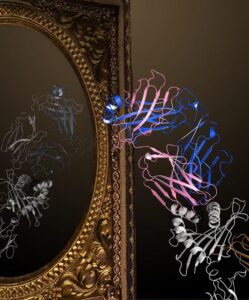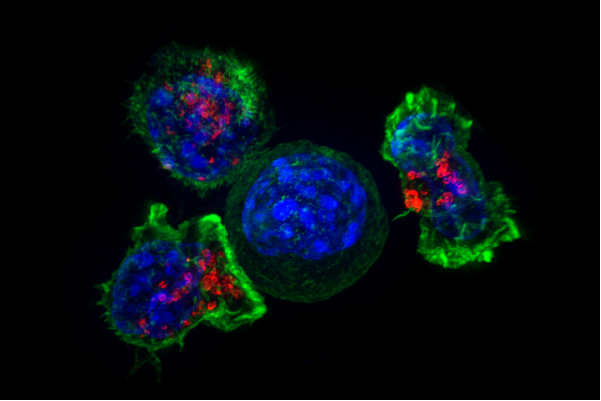A recent study has found that T cells need to recognize pathogens in a particular orientation in order to receive a strong activating signal.
The collaborative work between researchers from the University of Utah, National University of Singapore, University of New South Wales, and Monash University, is published in Science, in a paper titled, “Canonical T-cell receptor docking on peptide–MHC is essential for T-cell signaling.”
T cells play a key role in the immune system by eliminating invading pathogens, such as viruses, and it is crucial to understand the factors that determine how and why T cells become activated after recognizing these pathogens. T cells express on their surface a T-cell receptor (TCR) that recognizes and binds to virus fragments presented by infected cells. This recognition event can lead to T-cell activation and killing of infected cells.

“Our study has shown that the orientation in which the T-cell receptor binds is a primary factor determining whether the T cell receives an activating signal,” La Gruta said.
More specifically, the team tested an assortment of both canonical and reversed-polarity TCRs that were all specific for the same receptor—a cognate pMHC-I bearing a peptide derived from influenza A virus (IAV). The authors determined that “docking topology was the primary driver of in vivo T-cell activation and recruitment when mice were infected with IAV.” The canonical topology, they said, was required for the formation of a functional signaling complex, suggesting that T-cell signaling constraints dictate how TCR and pMHC meet.
Pirooz Zareie, PhD, a postdoctoral research fellow at Monash University stated, “A combination of technologies, including super-resolution microscopy, X-ray crystallography at the Australian Synchrotron, biochemical assays, and using in vitro and in vivo experimental models from a variety of labs led to the findings.”
“This is an advance in our fundamental understanding of how a T cell needs to ‘see’ pathogenic antigens in order to be activated,” La Gruta said. “It has clarified a critical mechanism essential for effective T cell immunity. It is also relevant to the ongoing development of immunotherapies that aim to boost the activation of T cells.”



